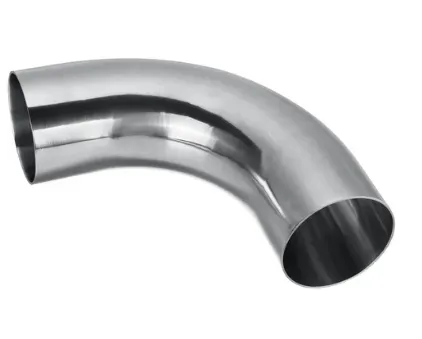-
Cangzhou Yulong Steel Co., Ltd.
-
Phone:
+86 13303177267 -
Email:
admin@ylsteelfittings.com
- English
- Arabic
- Italian
- Spanish
- Portuguese
- German
- kazakh
- Persian
- Greek
- French
- Russian
- Polish
- Thai
- Indonesian
- Vietnamese
- Zulu
- Korean
- Uzbek
- Hindi
- Serbian
- Malay
- Ukrainian
- Gujarati
- Haitian Creole
- hausa
- hawaiian
- Hebrew
- Miao
- Hungarian
- Icelandic
- igbo
- irish
- Japanese
- Javanese
- Kannada
- Khmer
- Rwandese
- Afrikaans
- Albanian
- Amharic
- Armenian
- Azerbaijani
- Basque
- Belarusian
- Bengali
- Bosnian
- Bulgarian
- Catalan
- Cebuano
- China
- China (Taiwan)
- Corsican
- Croatian
- Czech
- Danish
- Esperanto
- Estonian
- Finnish
- Frisian
- Galician
- Georgian
- Kurdish
- Kyrgyz
- Lao
- Latin
- Latvian
- Lithuanian
- Luxembourgish
- Macedonian
- Malgashi
- Malayalam
- Maltese
- Maori
- Marathi
- Mongolian
- Myanmar
- Nepali
- Norwegian
- Norwegian
- Occitan
- Pashto
- Dutch
- Punjabi
- Romanian
- Samoan
- Scottish Gaelic
- Sesotho
- Shona
- Sindhi
- Sinhala
- Slovak
- Slovenian
- Somali
- Sundanese
- Swahili
- Swedish
- Tagalog
- Tajik
- Tamil
- Tatar
- Telugu
- Turkish
- Turkmen
- Urdu
- Uighur
- Welsh
- Bantu
- Yiddish
- Yoruba

Nov . 18, 2024 17:02 Back to list
Steel Pipe Bend Standards and Regulations for Different Industries
In the world of manufacturing and construction, understanding the standards and regulations pertaining to steel bend pipes is essential for ensuring product quality, safety, and compliance. Steel pipe bends are critical components in various applications, playing a vital role in the effective distribution of fluids and gases. This blog post will delve into the key standards and regulations governing steel bend pipe in different industries, offering insights for manufacturers, engineers, and quality assurance professionals.
What is Steel Bend Pipe?
Steel bend pipe refers to a section of steel pipe that has been shaped or curved to achieve a specific angle or radius. These bends are crucial in piping systems, allowing for efficient changes in direction without compromising the flow of materials. The manufacturing process of steel pipe bends involves intricate techniques, including hot bending, cold bending, and induction bending. The choice of method often depends on the application requirements and industry standards.
Industry Standards for Steel Bend Pipe
The manufacturing and use of steel bend pipes are governed by several industry standards, which vary across sectors. Here are some key standards relevant to different industries:
1. API (American Petroleum Institute) Standards: In the oil and gas industry, the API has established rigorous standards for steel pipe bends used in exploration and production. API 5L outlines the requirements for the quality and characteristics of pipes, including bends, ensuring they can withstand harsh environmental conditions.
2. ASME (American Society of Mechanical Engineers) Regulations: In the power generation and chemical processing industries, ASME standards play a crucial role. The ASME B36.10 and B36.19 codes specify dimensions and standard weights for steel pipes, including bend configurations, ensuring they meet industry specifications for safety and efficiency.
3. ASTM (American Society for Testing and Materials) Specifications: ASTM standards, such as ASTM A53 and ASTM A106, provide comprehensive guidelines on the physical and chemical requirements for seamless and welded steel pipes, including bends. Adhering to these specifications ensures that steel bend pipe can maintain structural integrity and durability under various operating conditions.
4. ISO (International Organization for Standardization) Rules: For international projects, compliance with ISO standards is often required. ISO 3183 specifies requirements for steel pipelines used in pipeline transportation systems that transport petroleum and natural gas, which includes the necessary specifications for pipe bends.
Regulatory Compliance Across Industries
Achieving compliance with these industry standards is essential for manufacturers of steel bend pipes. It ensures not only the safety and reliability of the products but also protects the reputation of the manufacturer. Here are some reasons why regulatory compliance is critical:
- Safety Assurance: Adhering to established standards helps prevent failures that could lead to dangerous leaks or spills, especially in high-pressure systems used in the oil and gas sector.
- Quality Control: Standards help in maintaining quality control throughout the manufacturing process, guaranteeing that each steel bend pipe meets or exceeds performance expectations.
- Market Access: Compliance with international and national regulations can also enhance marketability, allowing products to be sold in more regions and industries.
- Reduction of Liability: By following industry regulations, manufacturers can mitigate risks associated with legal liabilities stemming from product failures or non-compliance.
In conclusion, the importance of adhering to steel pipe bend standards and regulations cannot be overstated. From ensuring safety in hazardous environments to maintaining quality and achieving regulatory compliance, the correct implementation of these standards is crucial across various industries. As the demand for steel bend pipes continues to grow, it is imperative for manufacturers and users alike to remain vigilant and informed about the ever-evolving standards and regulations that govern the industry.
Staying updated with the latest practices and compliance requirements will not only enhance product quality but also foster a culture of safety and reliability in all applications of steel bend pipe. This knowledge is key to navigating the complexities of industry regulations, and ensuring that all piping systems are built to last.

Latest news
-
ANSI 150P SS304 SO FLANGE
NewsFeb.14,2025
-
ASTM A333GR6 STEEL PIPE
NewsJan.20,2025
-
ANSI B16.5 WELDING NECK FLANGE
NewsJan.15,2026
-
ANSI B16.5 SLIP-ON FLANGE
NewsApr.19,2024
-
SABS 1123 FLANGE
NewsJan.15,2025
-
DIN86044 PLATE FLANGE
NewsApr.19,2024
-
DIN2527 BLIND FLANGE
NewsApr.12,2024
-
JIS B2311 Butt-Welding Fittings LR/SR 45°/90° /180°Seamless/Weld
NewsApr.23,2024











